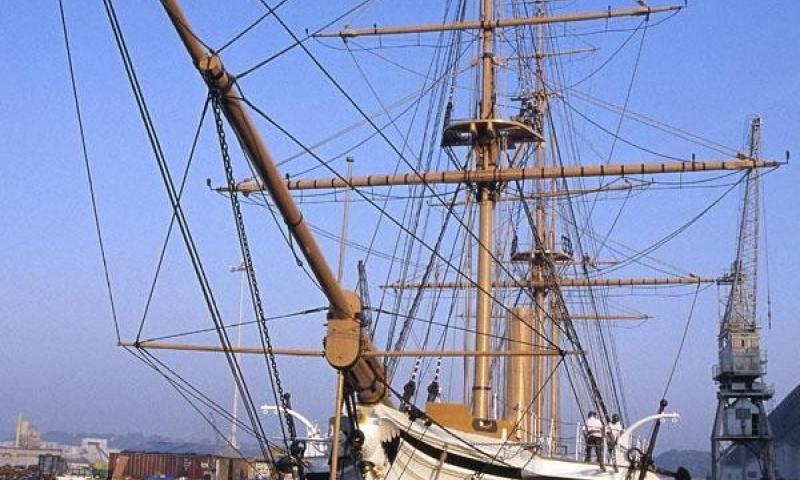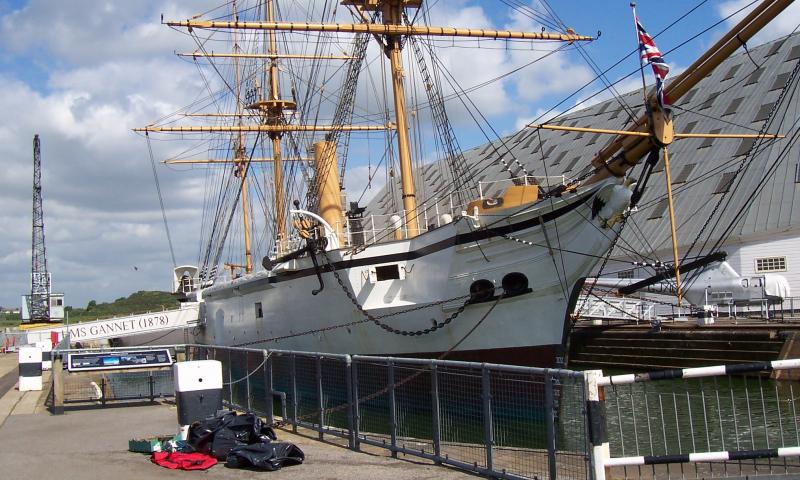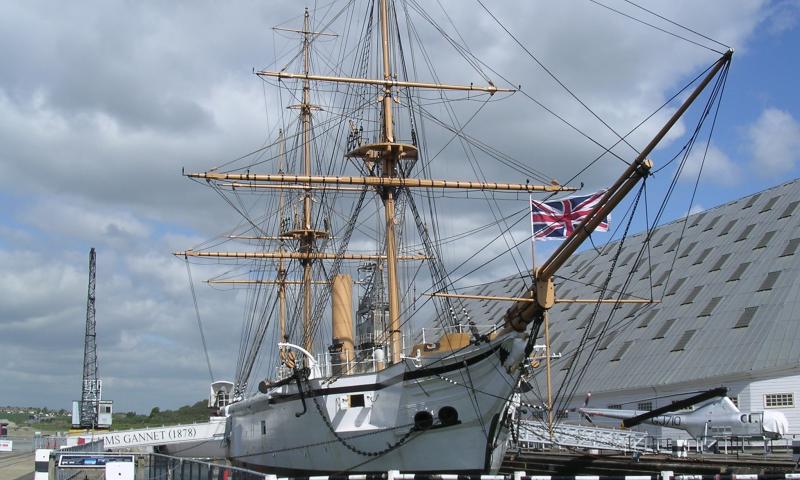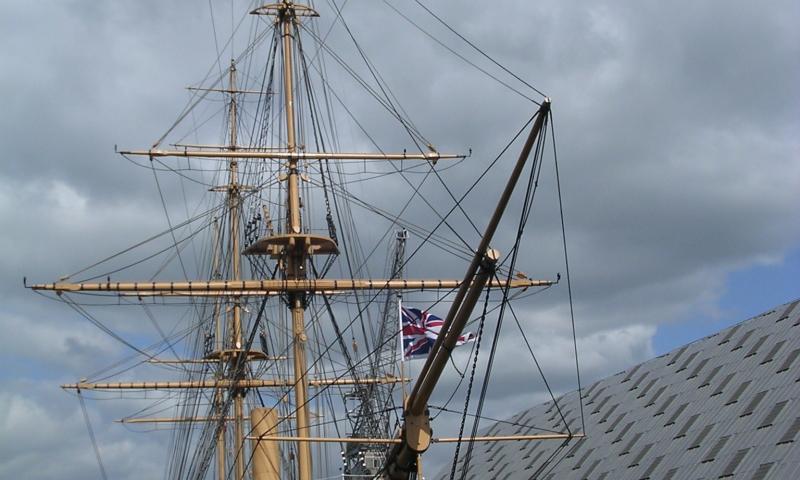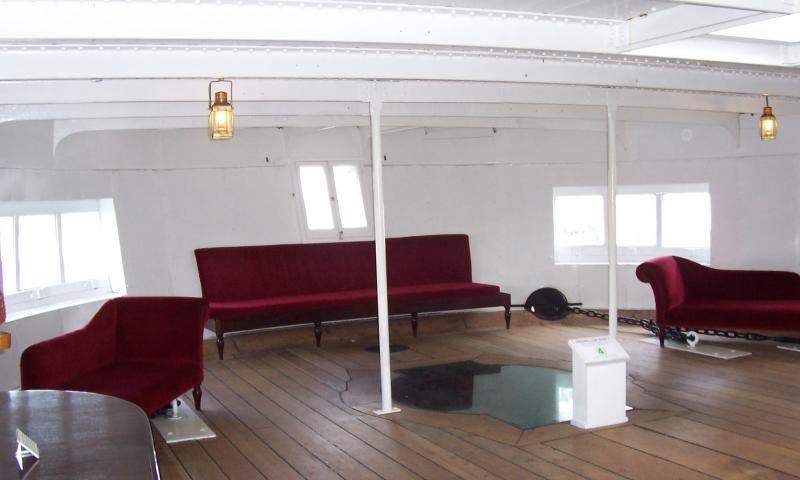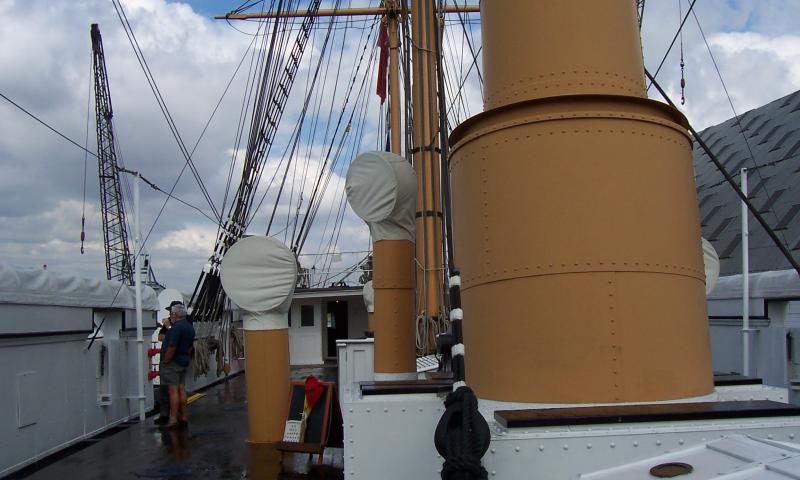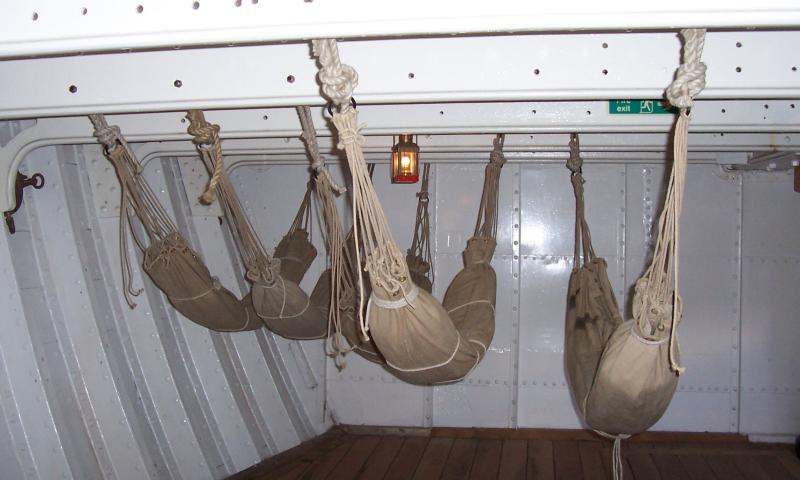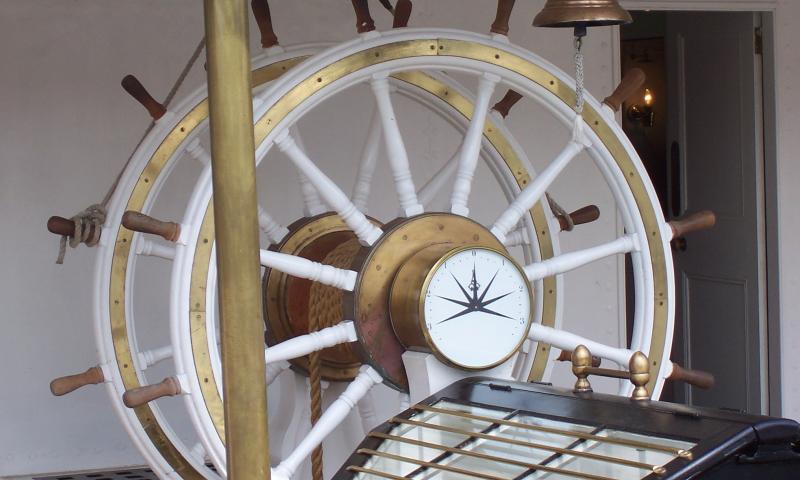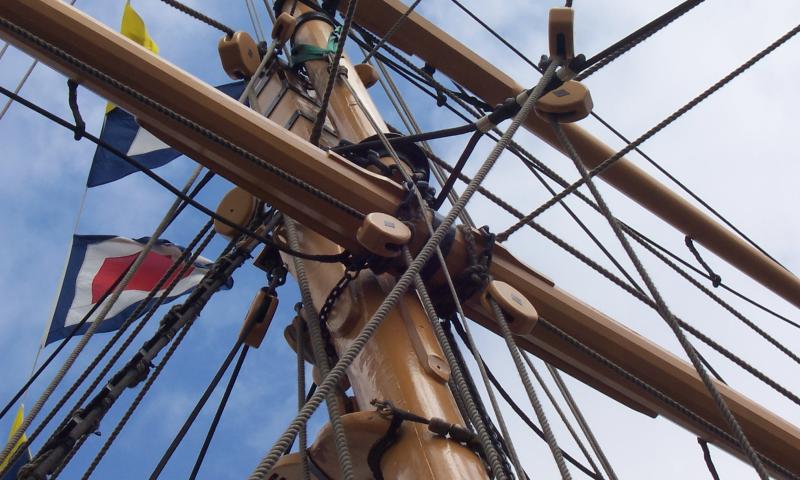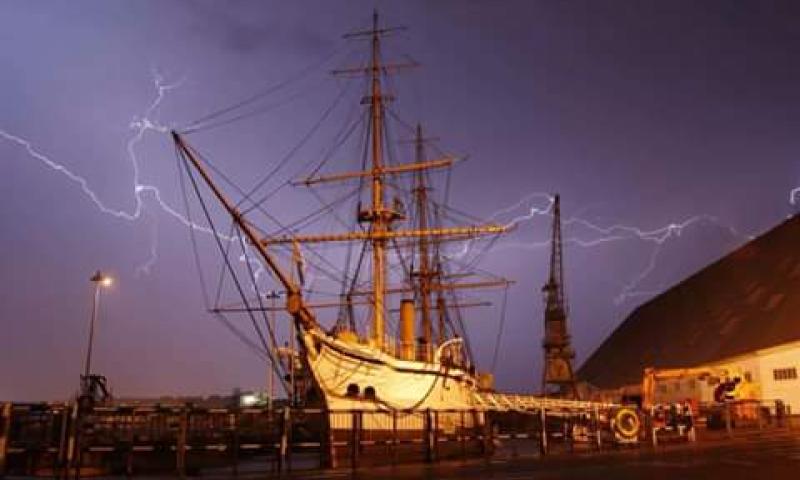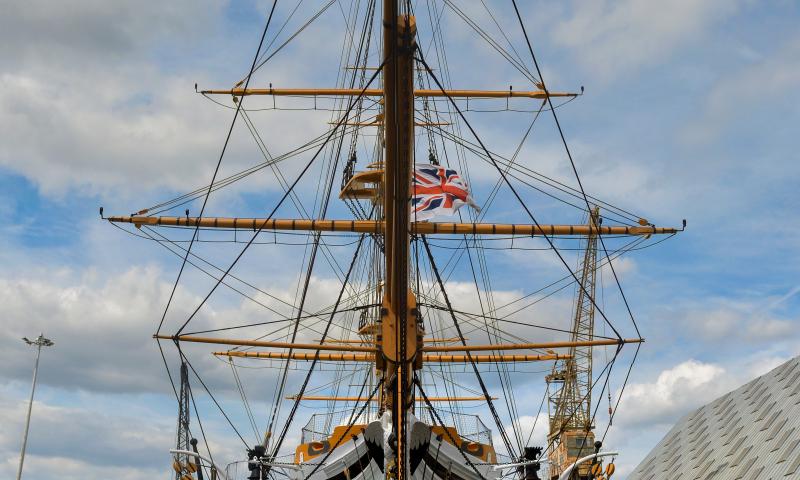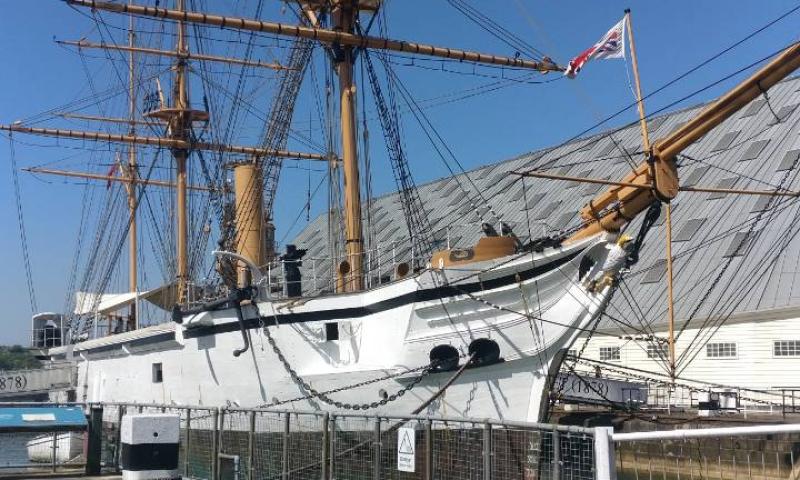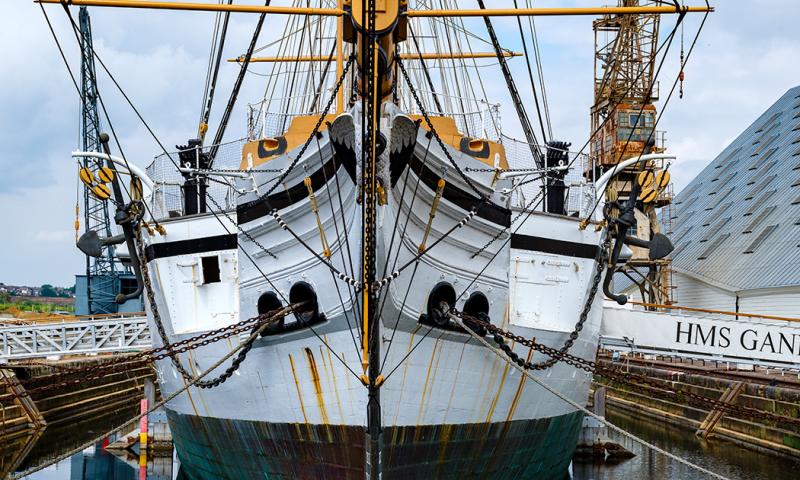Details
Construction
Dimensions
History
Built on the River Medway at Sheerness in 1878, HMS GANNET represents the heyday of the Victorian Navy and its worldwide role to police the waters of the British Empire. Between 1878 and 1895 she saw service in the Pacific, the Mediterranean and the Red Sea. In 1886 she saw action in defending the port of Suakin against rebel forces during the Sudanese revolt. In 1895 GANNET was decommissioned and in 1902 converted into a drill ship for the Royal Naval Reserve.
She served as HMS PRESIDENT, the headquarters of the London Divisions RNR, until 1911. In 1913 she was lent to the boys’ sea training school, TS MERCURY, on the River Hamble, for use as a dormitory ship. The school closed in 1968, and the GANNET and the ship was not removed from the River Hamble until 1970 when she was subsequently acquired from the Admiralty by the Maritime Trust in 1971. The Trust removed the topmost roof at Hardway.
She was later transferred to Chatham Historic Dockyard Trust for restoration. The restoration is now complete and the vessel has been re-rigged. She can be seen afloat in Number 3 dry dock at Chatham Historic Dockyard.
Significance
1. What is the vessel’s ability to demonstrate history in her physical fabric?
Evidence for designs, functions, techniques, processes, styles, customs and habits or uses and associations in relation to events and people. How early, intact or rare these features are may impact on significance.
HMS GANNET was one of nine Doterel class sloops built in 1878 for the British Navy. She was barque-rigged with three masts. She was constructed of wood and iron, and had a displacement of 1,130 tons. She was fitted with a Humphreys and Tennant horizontal compound expansion engine of 1,107 hp, giving her a maximum speed of 11.53 knots. She has a single propeller shaft; her 13ft 1 inch diameter propeller could be raised when under sail to make her more stream-lined. Her armament initially consisted of two 7 inch and four 64 pounder rifled muzzle-loaders. The latter were replaced in the 1890s by two 5 inch breech-loaders. Up to six machine guns were added to her armament in the 1880s. In 1902 her distinctive gannet seabird figurehead was removed when she became HMS PRESIDENT.
HMS GANNET was acquired by the Maritime Trust in 1968 who removed the topmost roof at Hardway. When ownership was transferred to Chatham Historic Dockyard Trust in July 1987, she was little more than a hulk, with her mast, guns and some areas of deck all removed. Conservation work to return her to her 1886 configuration (the only point in her naval career when she saw action) began and the false keel and stem were replaced, along with many rotted, wasted and damaged half timbers, although only minor repairs to the original iron framing and teak planking below the main deck were needed. Partial replacement of the copper sheathing has also been carried out. A new figurehead was carved and fitted, and a 4 ton, 69ft long fore-mast was put in place on Trafalgar Day, 1993. Subsequently a 29ft bowsprit has been fitted, the Commander’s Cabin and other areas of crew accommodation have been recreated, and the vessel has been fully re-masted and re-rigged. The fo’c’s’le, breakwater, bulkhead and forward firing gunposts have also all been fully re-instated on board. In 2011 a new 70ft lower foremast, in two sections and made up from some 200 pieces of kiln-dried Douglas Fir, was rigged up and fitted.
2. What are the vessel’s associational links for which there is no physical evidence?
Associations with people or places. Off-ship research.
HMS GANNET is of national significance as the last surviving small ship of Queen Victoria’s Navy. As an Osprey/Doterel class sloop she is highly representative of the large number of Royal Navy vessels used to police the waters of the British Empire, and to protect British trade and interests worldwide. With a complement of 140 officers and ratings, GANNET was built for overseas work giving her international significance. Her first commission was to the Pacific station where she was on patrol for five years, sailing over 60,000 miles, monitoring the ‘nitrate’ war between Chile and the Peru-Bolivia Alliance, and being present when the Peruvians scuttled their own fleet to prevent it falling into enemy hands. She then moved to the Mediterranean fleet, taking part in the defence of the port of Suakin on the Red Sea in support of General Gordon’s army in Sudan before going on to carry out survey and hydrographic work.
After being decommissioned in 1895, HMS GANNET took on her next significant identity having been converted into a drill ship. She served as HMS PRESIDENT, the headquarters of the London Division of the Royal Naval Reserve, until 1911, when she was offered to the then Captain Superintendent, C B Fry, but she was not delivered to the Hamble River until June 1914 for use as a training ship for boys seeking a career in the Royal Navy or merchant service. In 1913 Sir Winston Churchill, as Lord of the Admiralty, agreed to loan her to Mr C B Fry (the cricketer) as a dormitory for about 100 boys for the Training Ship MERCURY, recognising the need for well-trained Advanced Class Seamen. The training school MERCURY was successful in producing high quality recruits for the Navy for over 80 years and GANNET remained there until 1968.
HMS GANNET has been recorded on the National Register of Historic Vessels since 1996 and is part of the National Historic Fleet.
3. How does the vessel’s shape or form combine and contribute to her function?
Overall aesthetic impact of the vessel, her lines, material she was built from and her setting. Does she remain in her working environment?
HMS GANNET is a striking and graceful vessel and, whilst no longer operational, can be seen preserved afloat in Number 3 dry dock at Chatham Historic Dockyard, close to the place where she was built, on the River Medway at Sheerness in 1878. Her composite construction with stout teak planking on a strong iron frame made her fit for ocean sailing and overseas commissions where she would be based away from the UK for long periods of time. Powered by both sail and steam, she had the capacity for lengthy passages, whilst still being manoeuvrable in action and appropriately armed for her patrol work.
Source: NHS-UK team, 16 March 2016.
This statement was developed as part of the Heritage Lottery funded First World War project. http://www.ww1britainssurvivingvessels.org.uk/
Key dates
-
1878
Vessel launched at Sheerness Dockyard
-
1878-1895
On service in the Pacific, the Mediterranean and the Red Sea
-
1886
Saw action in defending the port of Suakin against rebel forces during Sudanese revolt
-
1895
Decommissioned
-
1899
Laid up in Gibraltar and then returned to Sheerness
-
1902
Converted into a drill ship for the Royal Naval Reserve Her figurehead of a gannet seabird was removed and her name changed to PRESIDENT
-
1913
Lent to the boys’ sea training school, TS MERCURY, on the River Hamble, for use as a dormitory ship
-
1968
Acquired by the Maritime Trust, later transferred to Chatham Historic Dockyard Trust
Grants
-
1999-00
The Heritage Lottery Fund awarded £2,661,000 towards her restoration
-
1998-1999
The Heritage Lottery Fund awarded £260,500 for a Development Study
-
1994
The National Heritage Memorial Fund awarded £130,000 for restoration works
Sources
Brouwer, Norman J, International Register of Historic Ships, Anthony Nelson, pp151, Edition 2, 1993
The Historic Dockyard Chatham, Kent, Chatham Historic Dockyaard & Jarrold, 1994
Classic Boat: Chatham Dockyard - New mast for HMS Gannet, October 2011
Warship World: Ship Restoration in Action - HMS GANNET at Chatham, pp15, Summer 1995
Brown, J F, Warship World: HMS GANNET Restoration of a Victorian Sloop, pp24-5, Spring 1988
Own this vessel?
If you are the owner of this vessel and would like to provide more details or updated information, please contact info@nationalhistoricships.org.uk



